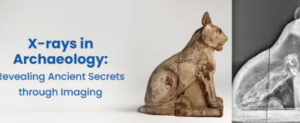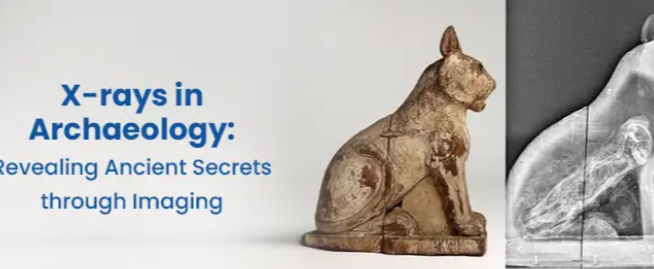The Power of Quantum Technology in X-ray Imaging for Archaeology
Archaeology has always relied on innovative techniques to uncover the secrets of ancient civilizations. Among these, X-ray imaging has emerged as a transformative tool, enabling researchers to explore artifacts and inscriptions without causing damage. With the advent of quantum technology, X-ray imaging is taking a giant leap forward, offering unprecedented precision and insights into historical objects. This blog explores how quantum-enhanced X-ray imaging is revolutionizing archaeology.
Why X-ray Imaging Matters in Archaeology
X-ray imaging allows archaeologists to study the internal structures of artifacts, skeletal remains, and even buried landscapes without physical dissection. This non-invasive approach preserves the integrity of fragile objects while revealing hidden details such as intricate designs, pigments, or inscriptions that are invisible to the naked eye23. Traditional methods often led to irreversible damage; however, X-rays ensure long-term preservation while providing valuable data about ancient craftsmanship and lifestyles
The Role of Quantum Technology in X-ray Imaging
Quantum technology enhances X-ray imaging by improving resolution and sensitivity. Quantum-enabled X-rays can detect minute differences in material composition, making it possible to analyze faded inscriptions or subtle pigment traces with remarkable accuracy. For example:
-
Quantum X-ray Diffraction (QXRD): This technique determines crystallographic phase information in artifacts without being affected by their shape or texture. It has been used to identify pigments on painted objects and verify authenticity
-
Quantum X-ray Fluorescence (QXRF): QXRF imaging detects trace elements in worn inscriptions, enabling researchers to recover lost texts or reconstruct ancient laws and decrees
These advancements are powered by ultra-intense quantum X-ray beams capable of scanning objects at high speeds while maintaining precision
Applications in Archaeology
Quantum-enhanced X-ray imaging is already proving invaluable across various archaeological domains:
-
Artifact Analysis: From pottery and jewelry to wooden relics, quantum X-rays reveal internal structures and hidden features without damaging the object
-
Epigraphy: Recovering faded stone inscriptions becomes feasible with QXRF imaging, which maps trace elements like iron or lead used in ancient chisels and paints
-
Disease Identification: Analyzing skeletal remains helps identify ancient diseases, shedding light on historical health practices
-
Landscape Mapping: Quantum-enhanced X-rays can detect buried structures and settlements, aiding excavation planning
Advantages of Quantum X-ray Imaging
| Feature | Traditional X-rays | Quantum-enhanced X-rays |
|---|---|---|
| Resolution | Moderate | Ultra-high |
| Sensitivity | Limited | Detects minute material differences |
| Non-invasive analysis | Yes | Yes |
| Artifact preservation | High | Very high |
| Applications | Broad | Expanded (e.g., epigraphy) |
Future Prospects
As quantum technology continues to evolve, its applications in archaeology are expected to expand further. Portable quantum X-ray devices will enable real-time analysis at excavation sites, reducing research timelines while enhancing accuracy. Additionally, advanced imaging software will allow archaeologists to create detailed 3D models of artifacts for deeper analysis and public engagement.
Conclusion
Quantum technology is transforming archaeology through enhanced X-ray imaging techniques. By combining non-invasive methods with unparalleled precision, researchers can unlock ancient secrets while preserving cultural heritage for future generations. As this field progresses, we can anticipate groundbreaking discoveries that deepen our understanding of human history.

Also Read :
